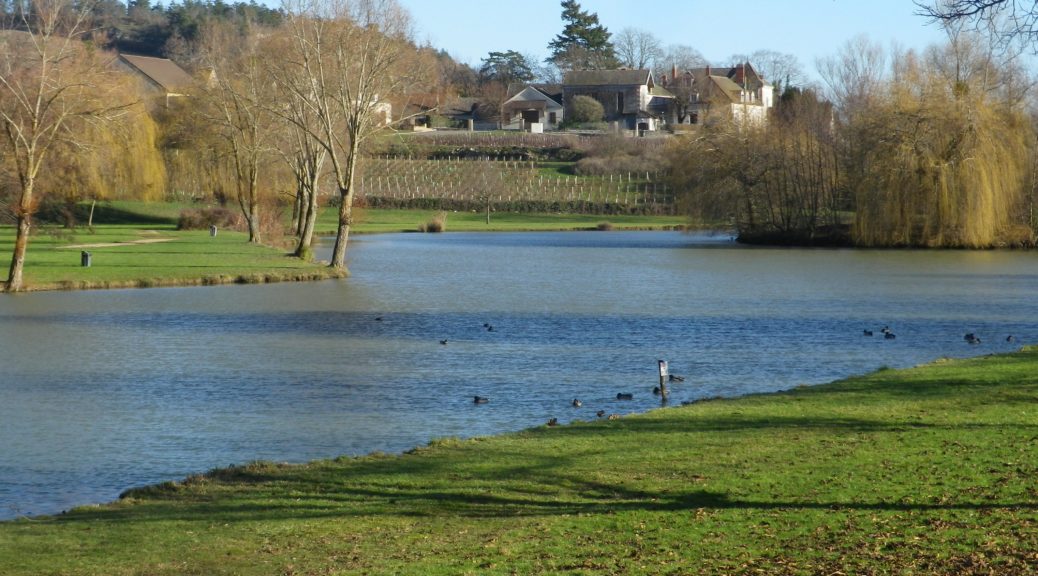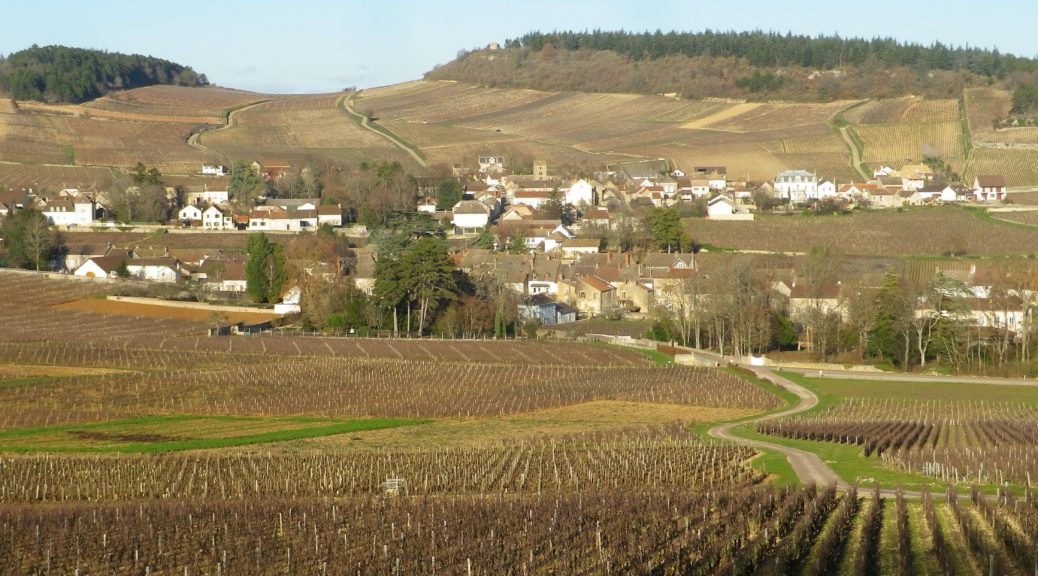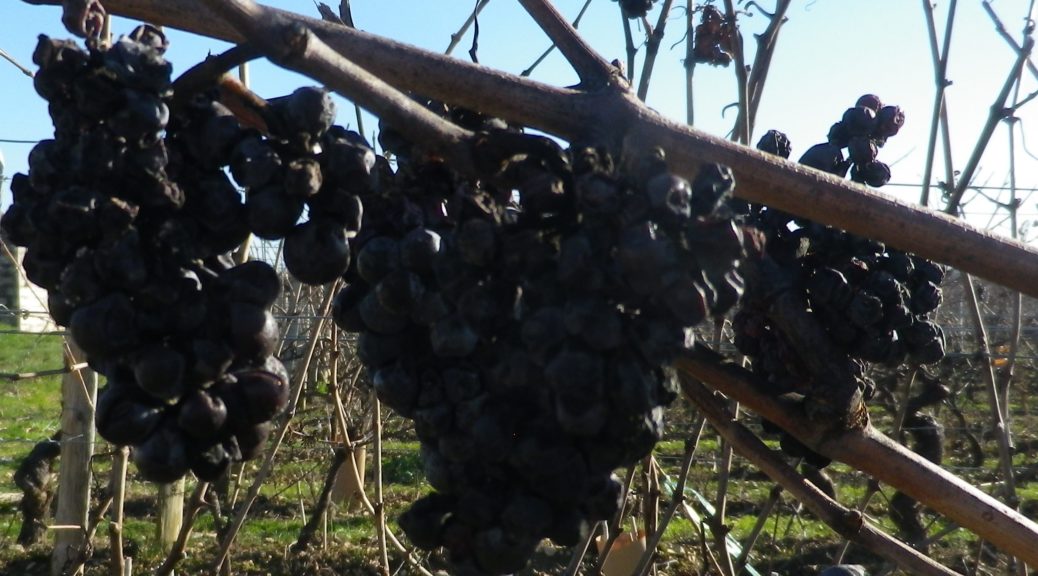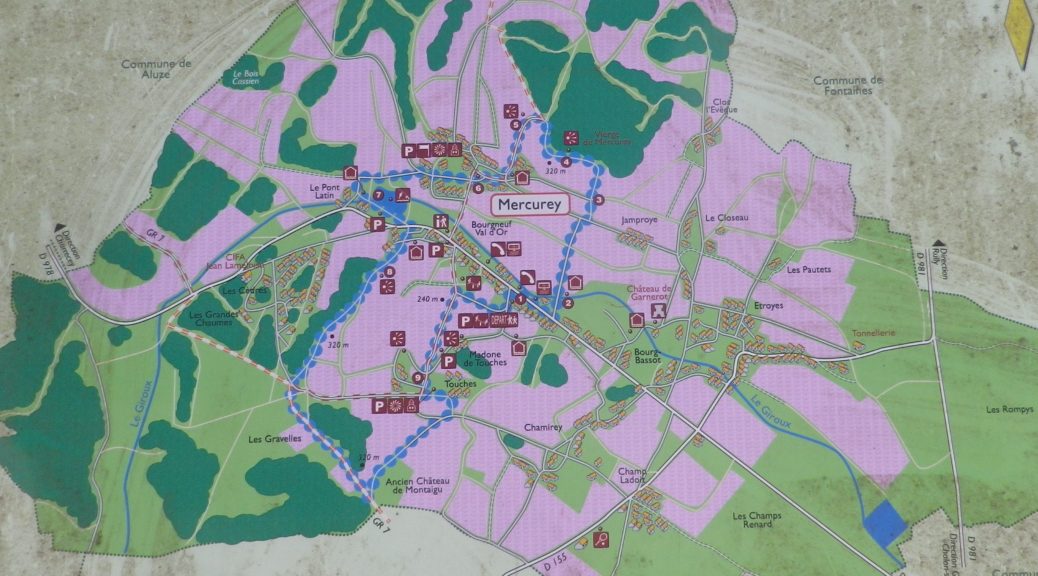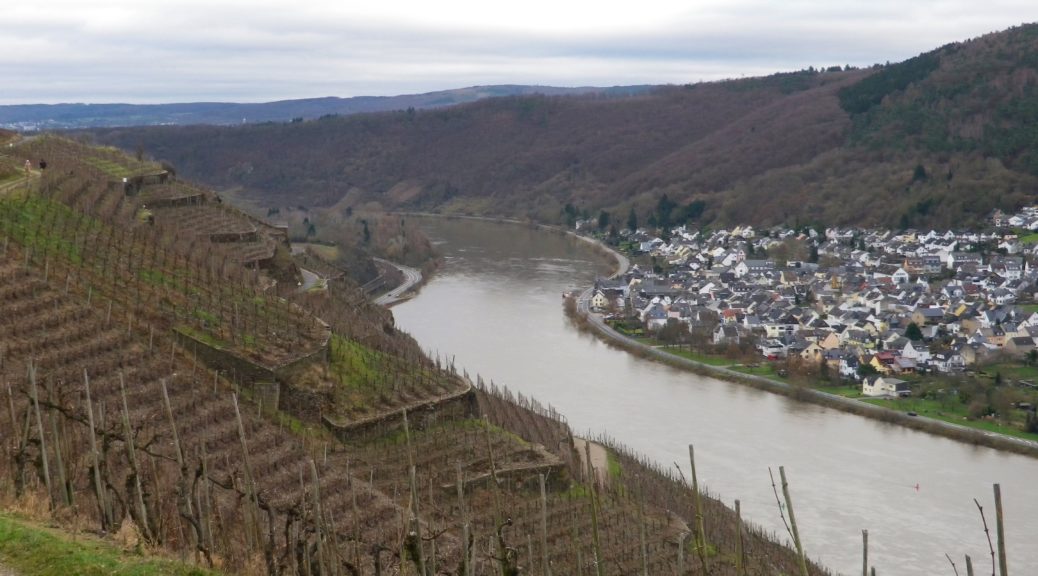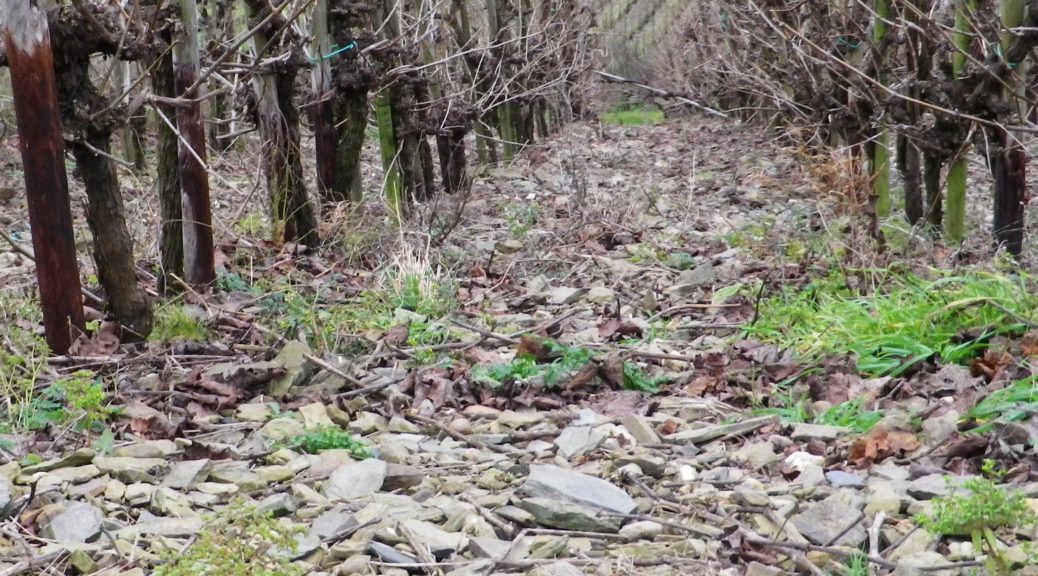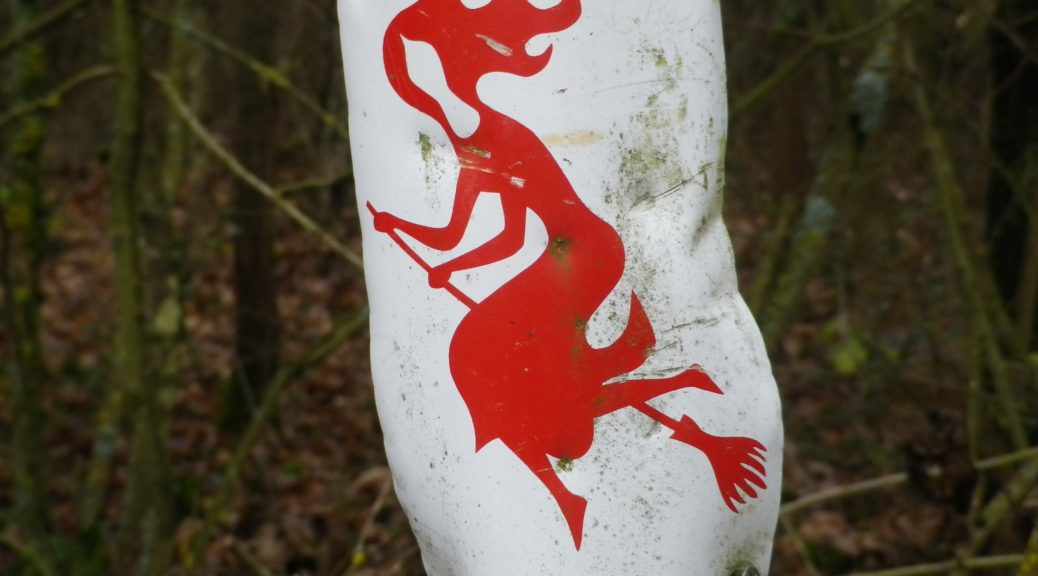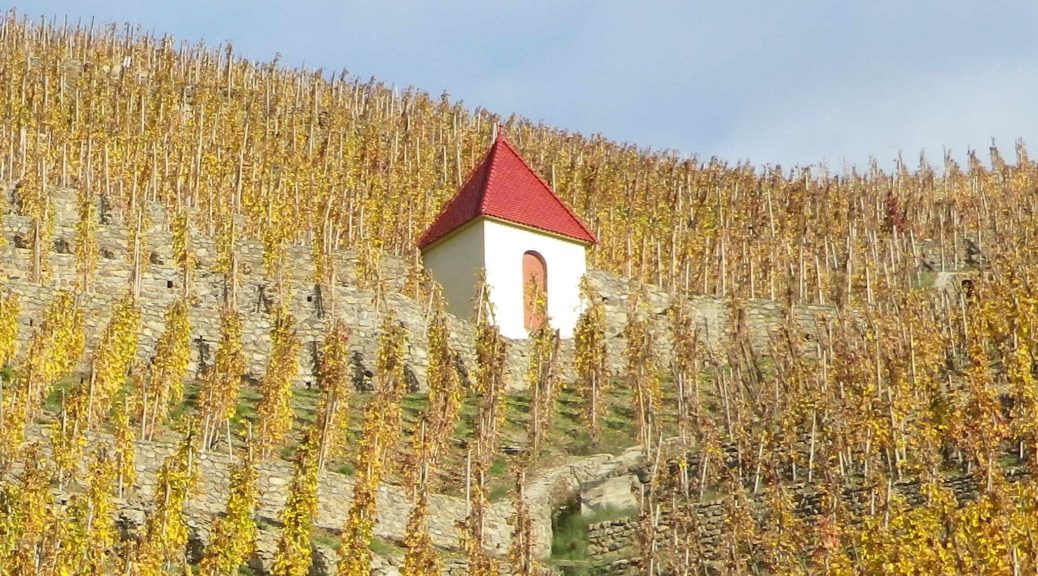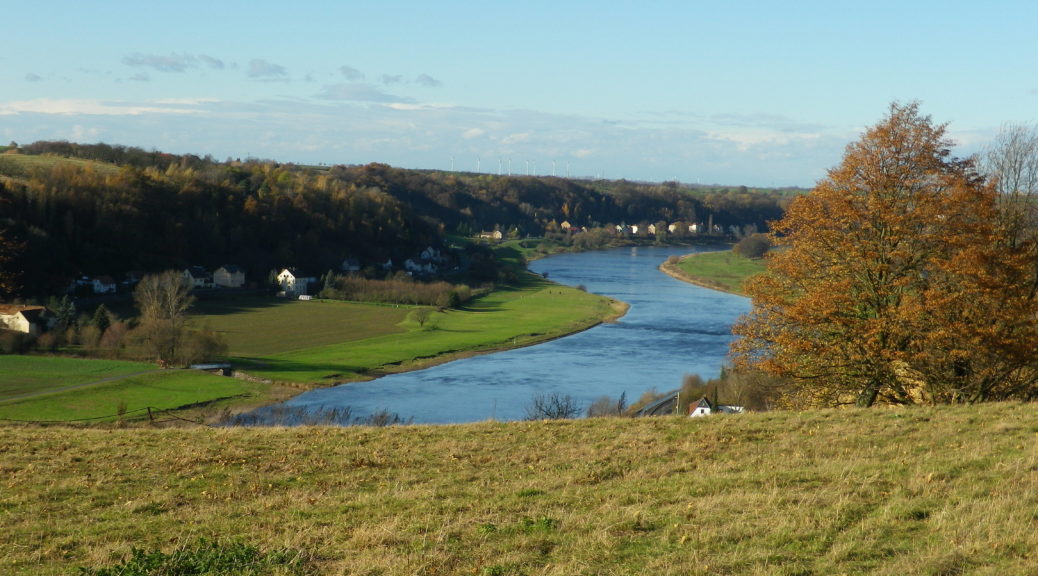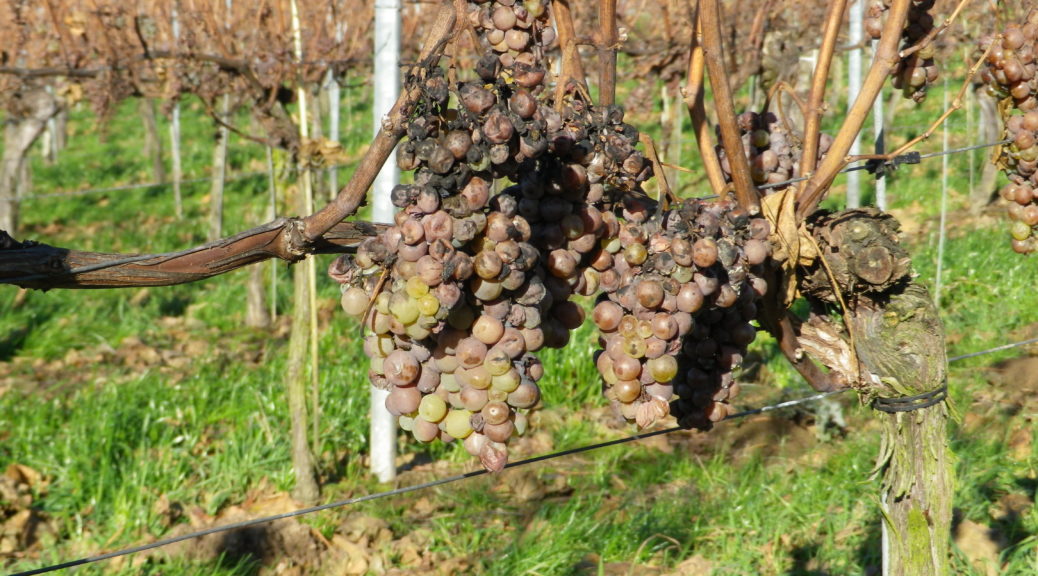A Godly Wine
Mercurey, named after the Roman God Mercury, god of commerce trade and travelers, was a fortuitous discovery for this traveler of wine country. Both the village and the eponymous appellation lie in the Cote Chalonnaise sub-region of the Burgundy wine region. The village made its entry into history as a way-stop on the Roman trade route leading to Autun from Chalon-sur-Saone, graced by a small temple to the god of trade. Presumably, this route proceeded along the same straight trajectory as the modern road through the center of town, alongside a steam. But the village’s real piece of luck was to be set in natural amphitheater. While the road follows the stream in the bottom land, vines cover the slopes all around.
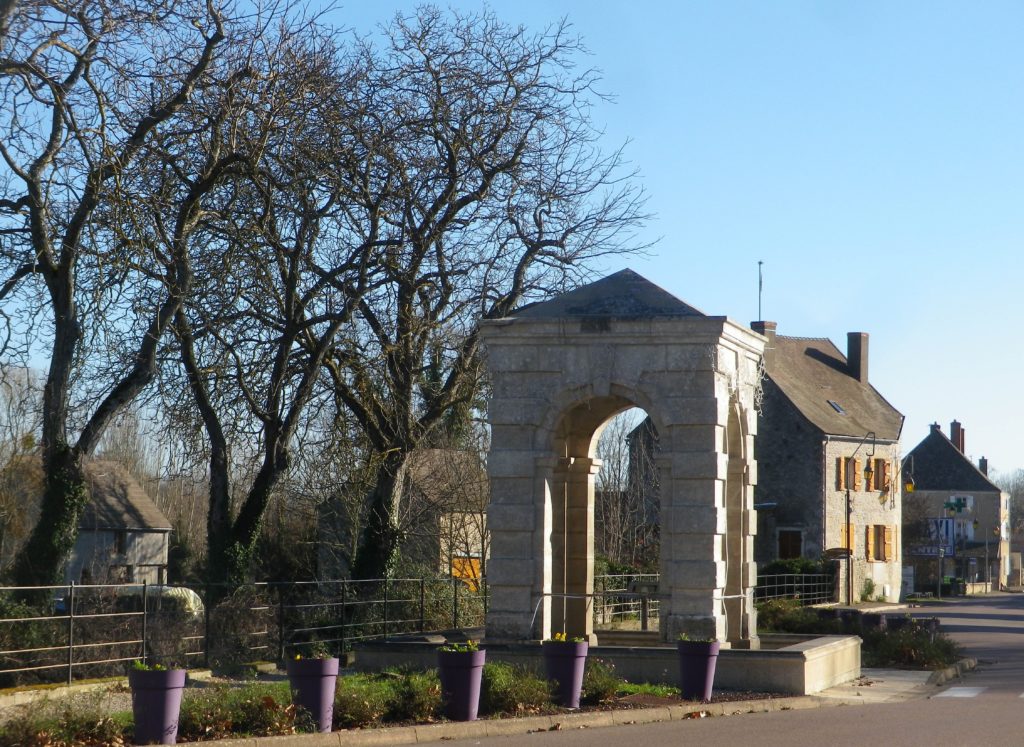
Wine Notes: Mercurey
What I Learned
Mercurey is a small appellation in the Cote Chalonnaise wine sub-region of Burgundy. This appellation has about 800 hectares under vine, spread between the villages of Saint Martin sous Montaigu, and Mercurey, with its hamlets of Touches, Chamirey and Etroyes. A number of Premier Cru are found throughout this area. Viewing the area, one is struck by the number of clos – enclosed vineyards.
About 85 percent of total harvest comes from its famed Pinot Noir grapes, which do exceptionally well in its soils. A parcel entitled Les Ruelles is known in particular for its clay soil, almost blood red in color due to its high iron content, giving wines from this parcel distinct flavors. Total red wine production in this AOC is about 3.3 million bottles every year.
Mercurey: Trail in a Nutshell
Trail Name: Mercurey; AKA: Circuit des Vignes (Circuit of the Vignes), Petite Boucle de Mercurey (Small Circuit of Mercurey), and M1 (on signs)
Trail Type: Short distance circuit through various landscapes, but half of it vineyards; fairly well-maintained with a variety of surfaces, including some naturally rough (rock) surfaces in places; some climbing; marking on the trail very good overall.
Length:
Total – 7.75 kilometers/4.8 miles
Convenient to: Chalon sur Saone, or Macon, France
Marking: Yellow lines; as well as posts indicating positional and directional references

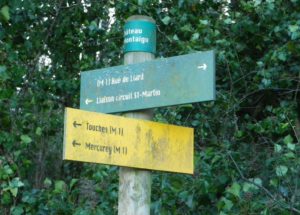
On Witches and Wine
On a dark December day, Christmas Eve 2017, the raw wind cut like a knife atop the Hexen Berg above Winningen. The beautiful views of the Moselle Valley from above, belied an ugly past here. Hexen Berg means Witch Mountain, and here, from 1641 to 1651, many so-called witches were cruelly burned alive during a period of great superstition and intolerance.
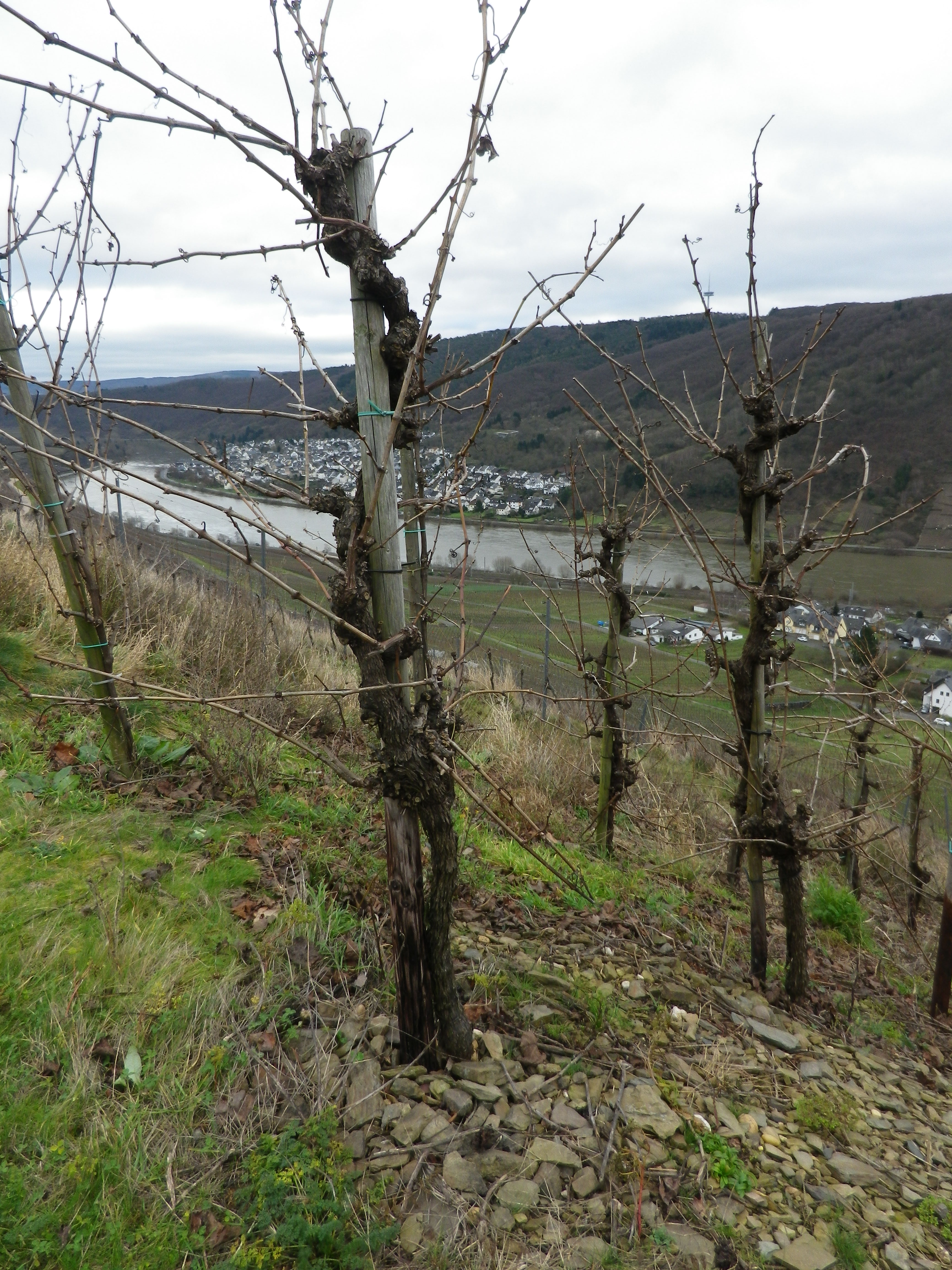
Wine Notes: Terraced Moselle
What I Learned:
Germany’s Moselle River region is as an important wine-producing area in Germany as the Rhine region. Called the “Mosel,” in German, it is also important to the wine industries in Luxembourg, and Lorraine, France. It is the oldest wine producing region in Germany.
The Moselle is famous for its slate. Ribs of the stuff poke out from the earth, and chunks of it cover the ground under the vines. While the Moselle is not as long as the Rhine, it is so diverse as it flows northeast through Germany, that it can be divided into distinct wine areas. Germans refer to these Moselle sections as the Upper Moselle, beginning at the French border, the Middle Moselle, and the Lower Moselle, ending at Koblenz.
Hexenpfad: Trail in a Nutshell
Trail Name: Winninger Hexenpfad
Trail Type: Short distance; well-maintained, varied surfaces (grass, earthen, paved; signage good in some places, but lacking in others along the trail
Length: 8 kilometers/5 miles
Convenient to: Koblenz, Germany
Marking: Red witch on a white background (See photo above.)
Gallery December 2018
Wine in Saxony
Germany’s eastern-most wine producing region is in the region of Saxony, starting not far from the eastern borders Germany shares with Poland and the Czech Republic. Culturally, Saxony has a lot on offer for any culture maven; Historically, from the Carolingian era forward, Saxony played a tremendous role in the political vicissitudes of the German speakers in this region of central Europe, with monuments of all sorts to prove it; Additionally, the Saechsische Schweiz (Saxon Switzerland) region, with its famous rock formations like the Bastei and Lilienstein, provides magnificent hiking trails for visitors to enjoy!
Naturally, the hiking trail I chose was a wine-themed trail. This far east and north, vines usually require a body of water to help moderate the temperatures. In this case, the vineyards primarily flank the right bank of the Elbe River. The trail itself followed through these vineyards, and through several villages, towns and cities associated with wine-making. This trail, almost 90 kilometers long, covers much of the vineyard area for which this part of Saxony is famous, interrupted, if you will, by the huge city of Dresden. Not having time to complete the whole trail, I had to choose one segment. I had previously visited Dresden, itself an important city culturally and historically, but never got to Meissen, home to the famous porcelain factory. Thus, I decided to start in vineyards on the southern edge of Meissen, and hike to the end of the trail.
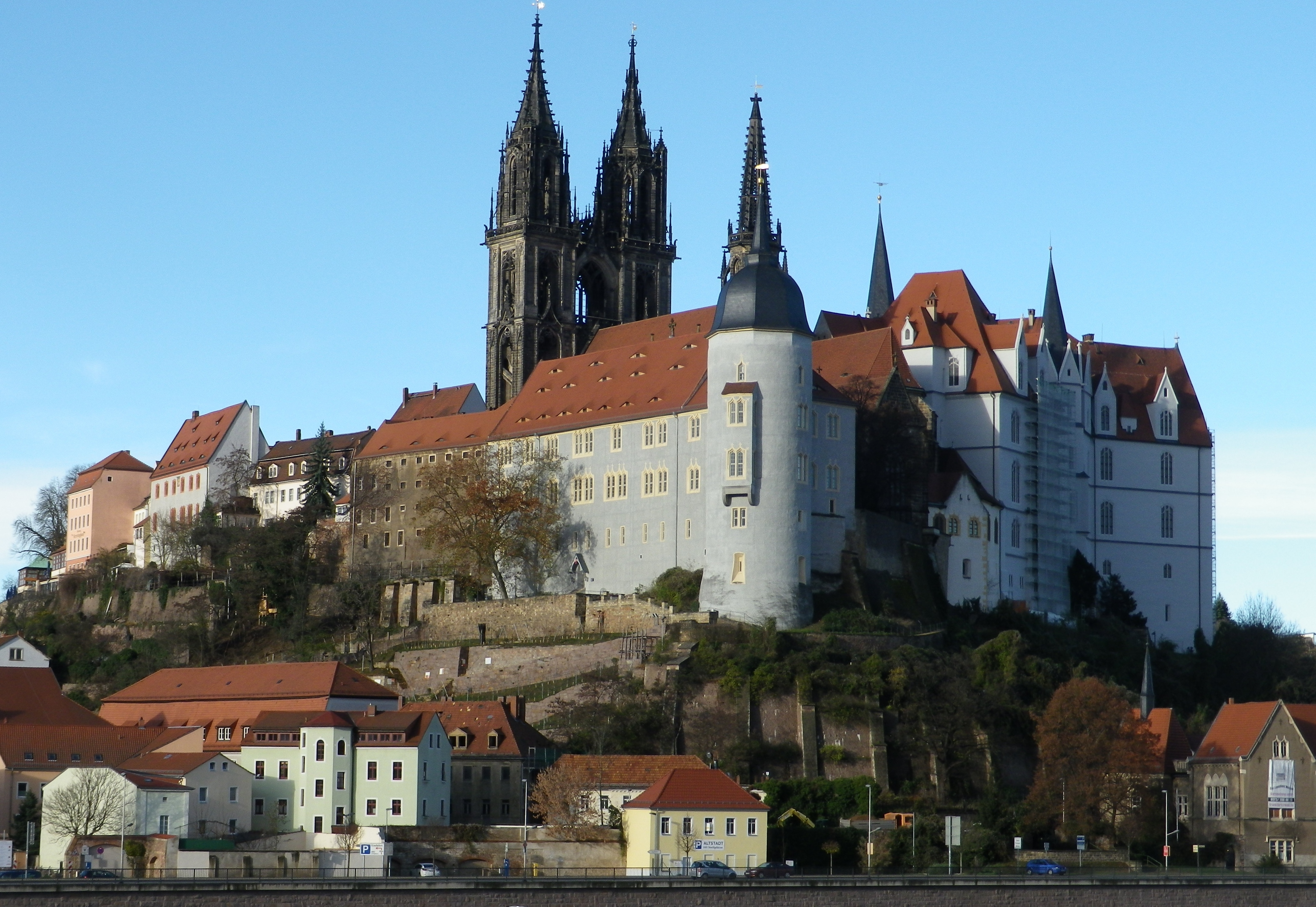
Wine Notes: Saxony
What I Learned
Winemaking came comparatively late to the German wine region of Saxony. According to legend, the noble Bishop of Meissen, Benno, was the first to introduce vines to this area around the year 1100. These first vines were supposedly planted near the mount of Meissen, where the castle and cathedral now stand. About 60 years later, wine-making in Meissen was historically documented. While not the northern-most wine region in Germany, it is the eastern-most wine region, being rather close to both the Polish and Czech borders. Here, the wine region’s vineyards follow the course of the Elbe River, as it enters German from the Czech Republic. The majority of the vineyards are on the right bank (eastern side) of the river, on the south and west facing slopes. With only about 500 hectares (about 1250 acres) ranging along about 50 kilometers of the Elbe, it is one of Germany’s smallest designated wine regions.
